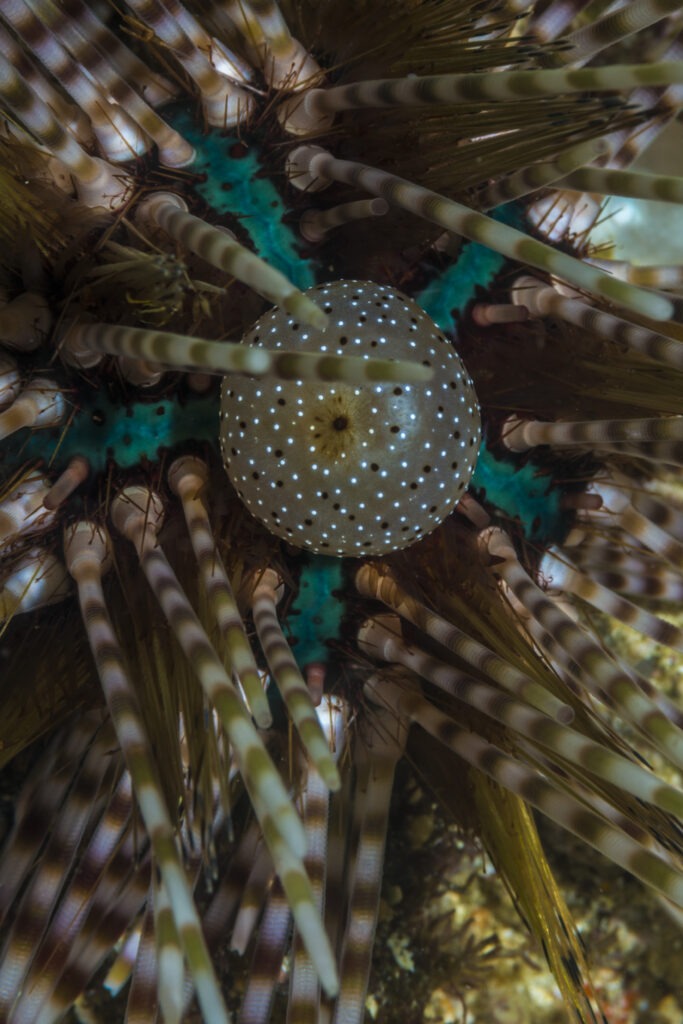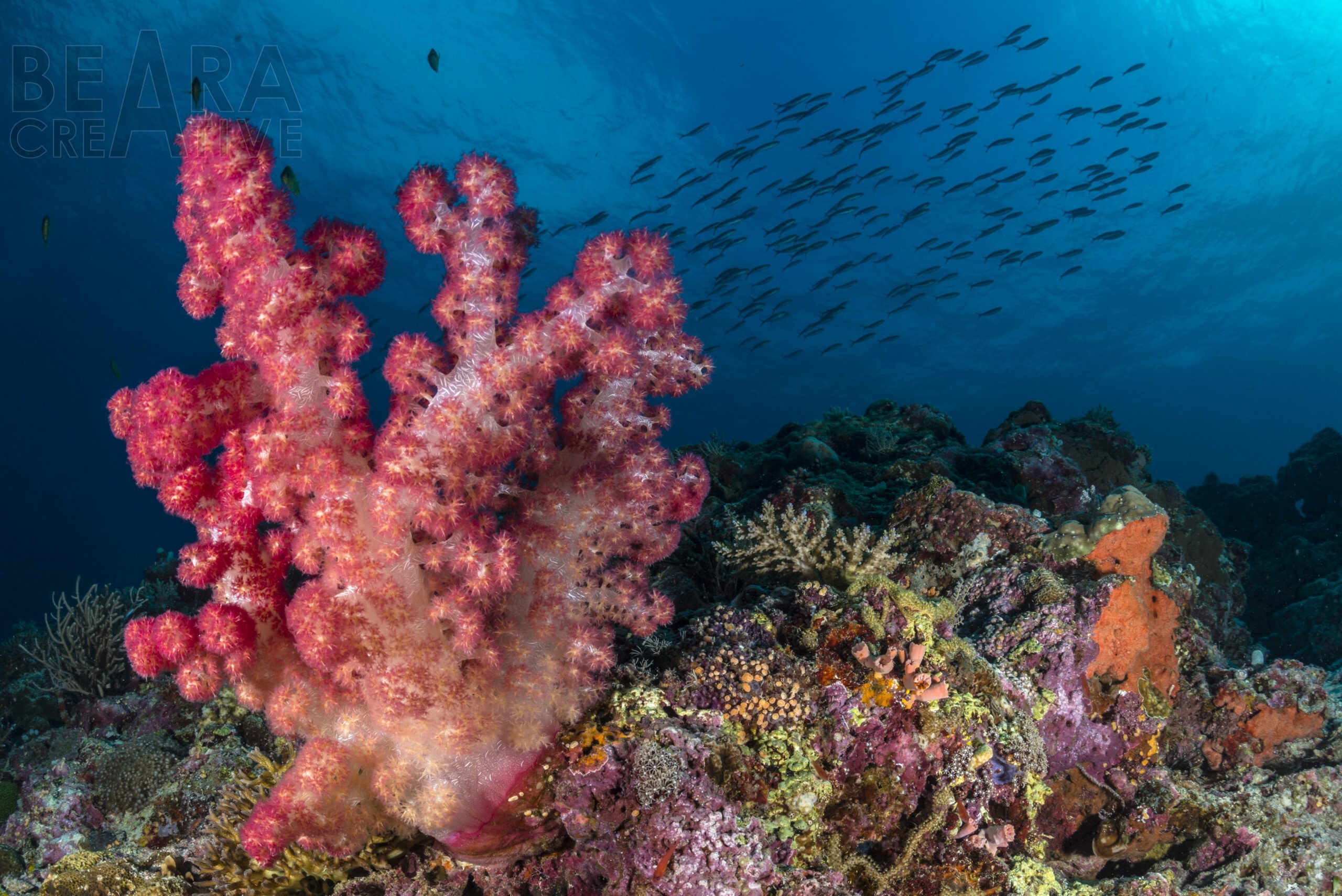

The double-spined or banded sea-urchin Echinothrix calamaris
Location & date
Malapascua, Philippines: 14th November 2014
Subject
A close-up of the banded (or double-spined) sea urchin Echinothrix calamaris showing the translucent anal papilla (which looks like a glitter ball). The banded spines can clearly be seen, as well as the five naked areas of test forming a blue star pattern, which is a distinguishing feature. The banded sea urchin is distributed throughout the Indo-Pacific region, and generally only comes out from rock or coral crevices during the night. However this individual was out in the open during the daytime. The smaller spines can produce a nasty sting.
About this image
I often see these sea urchins, even during the daytime, but had never really stopped to look really close up. I have usually been trying to avoid them, while photographing other species. I never noticed the beautiful pattern formed by the test and spines.
Camera setup
Nikon D800, 105mm in a Nauticam NA-D800 housing with two Inon Z240 strobes
ISO 100, f/16, 1/100 sec
More like this:
Malapascua 2014 Portfolio gallery (on Toby Gibson Portfolio site)
Gallery of Philippines wildlife (on this site)



